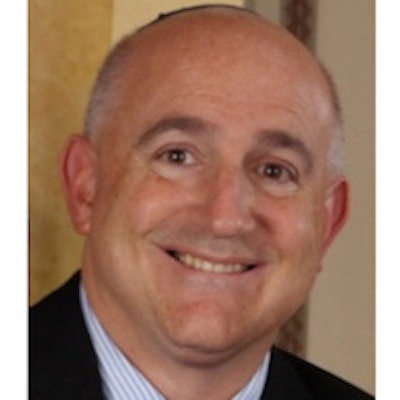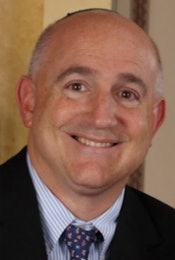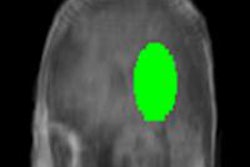
In recent years, the responsibilities of radiologists have greatly increased from not only making the proper radiologic diagnosis to also delivering prompt, safe, efficient, and friendly service. The timely reporting of radiologic results to referring clinicians has taken center stage, specifically recognized by the American College of Radiology (ACR), which has been continually updating guidelines to be adhered to by radiologists.
While streamlined communication of critical results is paramount to ensuring the quality of patient care, it's also a potential point of liability that can have serious reputational and financial consequences for an individual and his or her institution.
During the past decade, the field of radiology has also grown exponentially, and clinicians have ordered significantly more diagnostic exams across all modalities. In today's fast-paced and consumer-driven medical environment, more demands are imposed on clinicians to deliver quick and accurate care. These increasing demands have made it difficult for them to review imaging results in a timely fashion, resulting in potentially dire consequences for their patients and medicolegal implications for their organizations.
Aside from making the proper diagnosis, radiologists' responsibilities have also increased, with a focus on prompt delivery of diagnoses to facilitate patient care and to satisfy referring clinicians. Because of this dramatic increase in the number of exams performed, malpractice surrounding radiologist-related errors in diagnosis increased approximately 40% between 1996 and 2003.
 Dr. Mark Flyer, vice chair of radiology at Maimonides Medical Center.
Dr. Mark Flyer, vice chair of radiology at Maimonides Medical Center.Moreover, claims payouts due to communication breakdown in conveying test results rose by $70 million from 1991 to 2010 across all specialties. Although the most common cause of medical malpractice litigation in the U.S. is "failure to diagnose," the second most common cause is failure to communicate results of radiologic exams. As a result, quick and accurate communication between radiologists and clinicians has become more critical than ever in today's time-sensitive medical delivery system.
Our institution, Maimonides Medical Center, implemented a critical test results management (CTRM) software system four years ago after recognizing the potentially dire consequences of delayed communication of radiology test results and the resulting failure of clinicians to review radiologic reports.
To date, the implementation of the CTRM system has dramatically improved the workflow of radiologists and clinicians. It provides a safe and reliable method for radiologists to convey important radiologic findings and a quick way for clinicians to obtain radiologic reports, which ultimately improves patient safety and care.
Still, initiating a culture change in how radiologists and clinicians communicate was no easy task. Maimonides Medical Center is a busy, 730-bed community hospital, with more than 1,200 admitting physicians and two satellite facilities in the heart of Brooklyn and two in Staten Island. Our hospital performs a large number of radiologic studies daily and has the fifth highest volume of emergency department visits in the U.S. We are certainly not immune to communication breakdowns.
Radiologist-clinician communication failure is a major concern in today's malpractice litigation, and it has become a major focus for improvement and regulation by the ACR. The process of reaching clinicians in today's hospital environment is often time-consuming and reduces radiologists' productivity.
Moreover, with hospital acquisitions on the rise, instances of failure to communicate could potentially increase as these institutions that are integrating new physicians rely solely on best practices, instead of deploying a system that automates, monitors, and records reporting activity for auditing purposes.
Radiologists can no longer rely on indirect communication methods such as fax or secretarial staff, or depend on clinicians to search for reports on the PACS/RIS/HIS. Rather, they need to deliver quick and direct communication with clinicians.
Initially, our CTRM system was met with some skepticism by clinicians because they were concerned about potential disruptions to their already strapped workflow. In addition, decreased direct communication with radiologists was an initial barrier.
To address clinician resistance, we listened to their concerns and then worked diligently to accommodate them. For example, some clinicians prefer a direct one-on-one conversation with the radiologist to discuss results and their implications.
We make every effort to contact these particular physicians directly by phone first. In this case, CTRM is used only to document the conversation for auditing purposes. If the individual is not reachable for any reason, CTRM is then fully utilized. In addition, if a doctor has a question about a report sent via CTRM, he or she can respond to the radiologist via CTRM and a direct conversation can take place.
Our CTRM system has improved radiologist productivity by making it easier to convey findings to clinicians, allowing clinicians to expedite patient care as a result of receiving imaging results expeditiously. The majority of our clinicians have a positive attitude toward the CTRM system, particularly due to the more efficient patient care process.
This technology ensures that positive findings, albeit critical or unexpected, are delivered quickly and efficiently and are not lost in our busy enterprise. The system ensures that the referring doctor will receive the radiological report.
Equally important, it allows radiologists to know that referring doctors received and read the information. If they are out of compliance, an escalation process is activated until they acknowledge receipt. To date, there have been no malpractice cases at our institution with regard to communication of results.
In the end, the patient is the ultimate beneficiary of the changes we've made to how radiologists and clinicians communicate: This is the true added value of implementing this technology.
The comments and observations expressed herein are those of the author and do not necessarily reflect the opinions of AuntMinnie.com.



















